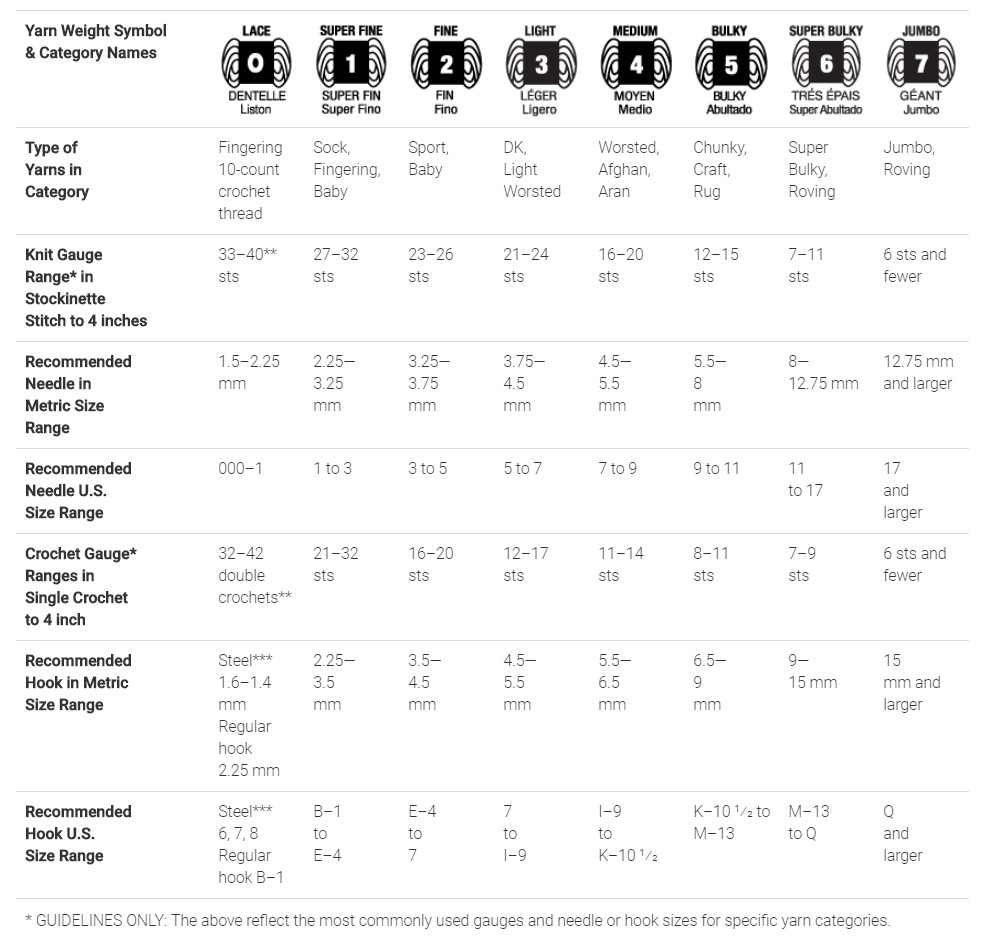All About Yarn, part 1
Craft Yarn Council Yarn Chart
So let’s talk about the thing that is overwhelming our houses, our thoughts, our hands…. Yarn! It comes in all colors, sizes, textures, shapes, even temperatures! So, what does it all mean?
First let’s look at the official chart from the Craft Yarn Council.

www.YarnStandards.com
There’s a lot of information in that chart and it can be hard to understand when we don’t all use the same language. Craft Yarn Council has helped us out a lot by standardizing these terms as much as possible, but it’s not foolproof. Some manufacturers use different terms, most stick to these guidelines as much as possible.
Looking at the top of the chart, you see these symbols:

These symbols are generally on every yarn label you will purchase. Small manufacturers may not always use them, but any large manufacturer will have one of these symbols somewhere. The number in the center of the image should be consistent with the word in the top of the image. Jumbo yarn is 7, Fine yarn is 2, for examples. Unfortunately, these terms are not always consistent in all patterns. I follow the Craft Yarn Council’s guidelines, but not everyone does, especially when you’re dealing with international manufacturers. So, you will sometimes see the following terms in patterns:

So you can see that Lace weight yarn can also be called fingering yarn, or even crochet thread! But, then – even more confusing – Super Fine yarn is also sometimes called fingering yarn. These terms are not consistent, but we do our best to explain them as well as we can as designers. And there are people working to make this more consistent.
So, how do you know if the yarn you chose will give you the desired results from a project? Gauge! That’s a whole lengthy post in itself, but we’ll discuss it briefly.

What this means is that to create a 4 inch strip of single crochet stitches with , for example, Worsted Weight yarn, you will need between 11 and 14. To measure this accurately, I would recommend you chain 20 stitches, turn, and start single crocheting across starting with the second chain until you have 4 inches. This will undoubtedly curl, but do your best to lay it flat and measure. Note that with Fingering Weight yarn, it’s recommended to use double crochets.
Okay, so you want to do that, but how do you know what size hook to use?

Thank goodness, hook sizes are pretty consistent. And, most of them have a letter AND a metric size to help make sure you’re using the right size. The most reliable sizing is metric, but check both. Note that Fingering Weight is a little wonky here again – you might use one size in a steel hook (a special hook designed for using thread, mainly to make lace or filet) and another size in a regular hook.

So, hopefully that clears up any confusion about that chart. In future posts, we’ll break down yarn labels, what kind of fiber is good for what kind of project, why you choose one weight over another, and tons more!
